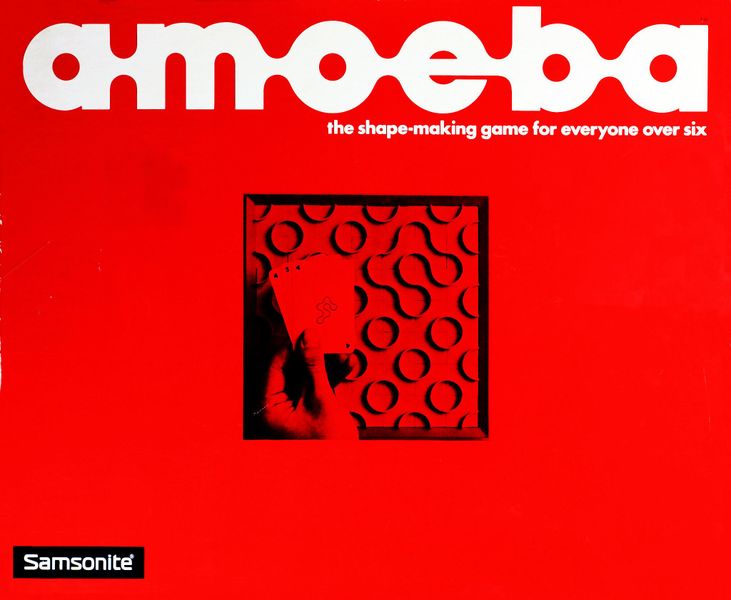Amoeba is a classic abstract strategy board game that was first released in in 1975. Designed by W. Barrington Pink, this game challenges players to strategically build patterns on a hexagonal board using their colored pieces.
Game Components of Amoeba
Tiles: Used to build and divide amoebas, each with unique artwork.Nuclei Markers: Wooden pieces to claim amoebas.Dice: A custom dice with numbers 1, 2, 2, 3 to determine the number of tiles to place each turn.
How To Setup Amoeba
To set up, shuffle the tiles and give each player 3 tiles and some nuclei markers. Place one tile on the board to start, and ensure each player has three tiles in their hand.
Gameplay Mechanics and Game Objective
Tile Placement: Players roll the dice to determine how many tiles they can place on their turn. Tiles can be placed normally, offset by half a tile, or used to cover gaps, as long as the artwork matches.Amoeba Formation: Players form amoebas (green blobs) with at least two segments (called “doots”) and place a nuclei marker to claim them.Division: Players can place tiles to split opponents’ amoebas, following specific rules to ensure all segments remain at least two doots.Objective: The game ends when all tiles are played. The player with the most doots (amoeba segments) wins.
Player Experience
Amoeba is best enjoyed with two players due to its tactical nature and reduced downtime. With more players, the game becomes less engaging as large amoebas are frequently divided, leading to smaller, less exciting formations.
Pros
Tactical Depth: At two players, the game offers strategic tile placement and division.Unique Mechanics: The ability to offset tiles and split opponents’ amoebas adds a unique twist.Good Production Quality: The game includes decent cardboard tiles and a chunky, customizable dice.
Cons
High Player Count Issues: Games with more than two players suffer from prolonged downtime and frequent division of large amoebas.Tile Distribution: The equal number of each type of tile can lead to less interesting gameplay as many tiles become part of a large, unmanageable “Mother Doot” amoeba.Limited Excitement at Higher Player Counts: Players are reluctant to build large amoebas due to the likelihood of them being split.
Personal Thoughts on Amoeba
Amoeba is for those who enjoy tile-laying games with a “take-that” element, where disrupting opponents’ plans is a key strategy. While it has its moments, especially at lower player counts, it may not be the best fit for players seeking complex or long-term strategy games. The game’s simplicity and unique mechanics make it an interesting, though not outstanding, addition to a game collection.
We are supported by our audience. When you purchase through links on our site, we may earn an affiliate commission, at no extra cost for you. Learn more.

